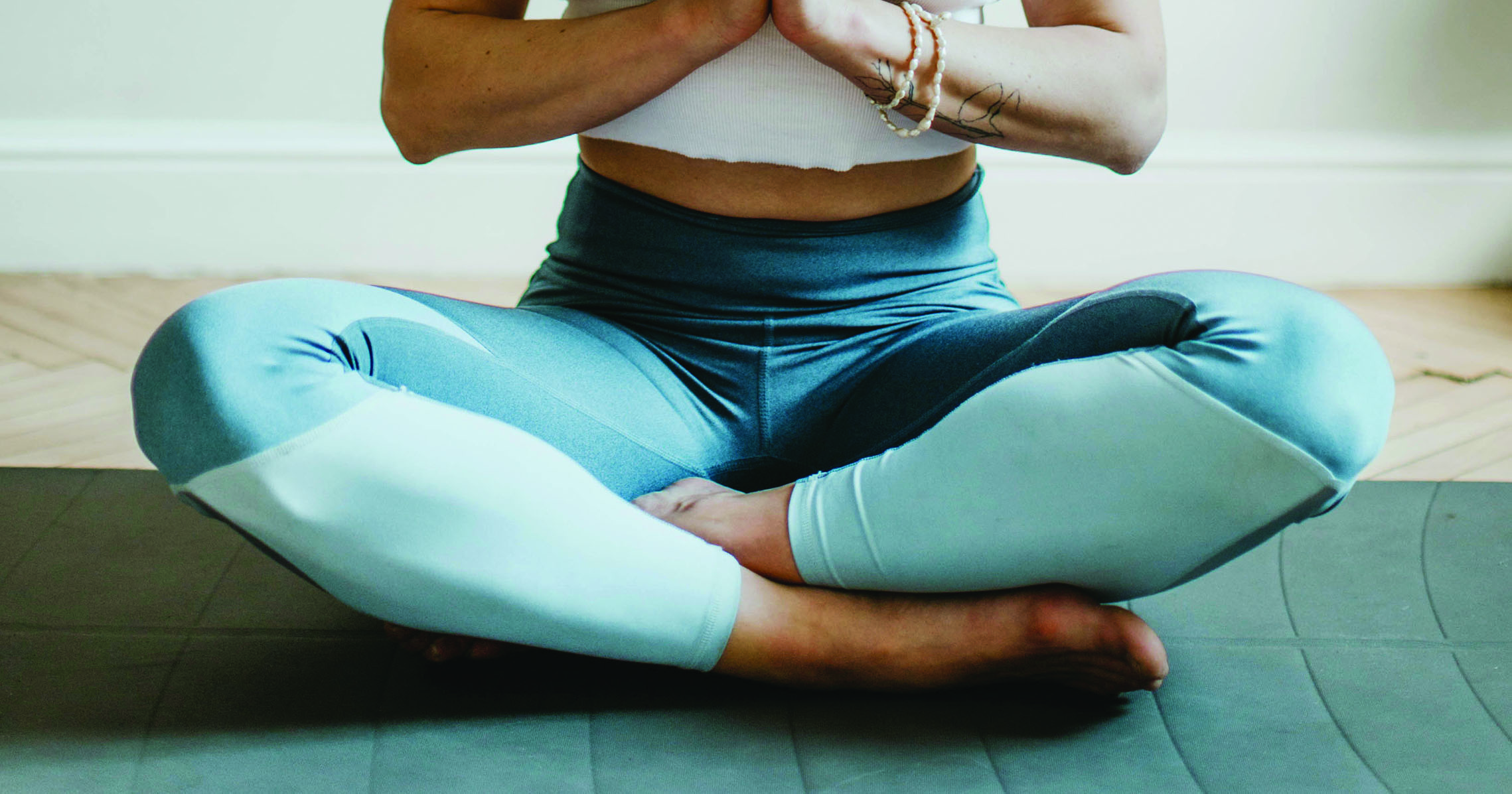We all know that good health extends far beyond diet and exercise. As we get older, not everything works the way it once did. Our metabolism slows, our joints may start to ache, and arteries harden, for example. If this sounds familiar to you, then you’re probably not 30 anymore.
It’s easy to talk to friends and family about things like knee pain and gaining weight, but there are other health concerns that are deeply personal and, as a result, you may be uncomfortable discussing them, even with your physician. The importance of pelvic floor health is one of those topics. More importantly, pelvic issues have no age limit and can begin when you’re young.
The pelvic floor is defined as, “The group of muscles and ligaments in your pelvic region. The pelvic floor acts like a sling to support the organs in your pelvis — including the bladder, rectum, and uterus or prostate. Contracting and relaxing these muscles allows you to control bowel movements, urination, and, for women particularly, sexual intercourse.” (www.healthline.com)
If you find that you never leave the house without going to the bathroom first, or maybe you know where every public bathroom is located when you run errands, then you’re one of the people we’re talking about. If you’re working from home as a result of the pandemic, not sitting in the best chair or workstation set up, and experiencing tailbone pain as a result, then this concerns you, too.
There are a lot of misconceptions surrounding the pelvic floor.
Here are just a few:
Only women have pelvic floors.
Not true. Every human body has a pelvic floor. Men are often the last to seek help in this area, likely because they don’t know who to talk to about it. It’s not uncommon for men to complain about pelvic pain, urinary urgency and frequency, difficulty emptying the bladder, and even difficulty with erectile quality. Many times, when they do finally seek help, they are diagnosed with benign prostatic hyperplasia (BPH) and treated with medication. While this alone is effective for some men, it’s not effective for others. The longer the symptoms go untreated, the more involved the pelvic floor muscles, surrounding muscles, and even the nerves innervating these muscles can be.
Pelvic floor problems are a normal part of the aging process.
Common, yes; normal, no. Whether this includes leakage, prolapse (a downward displacement of your bladder, uterus and/or colon), constipation, or sexual dysfunction, while it may be part of the aging process, it doesn’t mean there is nothing that can be done about it. We’ve all heard the saying ‘if you don’t use it, you’ll lose it.’ This holds true in the pelvic floor as this area is comprised of a bony pelvis, muscles, and nerves just like the rest of the body.
Kegels are for everyone.
Wrong. This is a huge misconception. Unfortunately, there are many people who have either sought treatment for pelvic floor issues and been told to simply ‘do their Kegels,’ or, who have searched Google only to find the same advice. Aside from the fact that not all Kegels are created equal, there are times when they should absolutely be avoided and doing them can actually worsen your symptoms. And yes, one of these symptoms can be urinary leakage.
Pelvic floor problems are all in your head.
It’s not uncommon for people with pelvic health conditions to see a myriad of different care providers only to be told that there is nothing medically wrong with them. While this might be the case from a true diagnostic standpoint, it does not mean that there is nothing wrong. This is why it is important to take a biopsychosocial approach to better appreciate the connection between biological, psychological and social factors to best understand the potential impact these may have on each individual.
Urinary leakage is normal with exertional exercise.
Not true. Leaking during exercise means that you have pushed your pelvic floor to the point of failure. Think about what this can mean for not only the organs this area supports, but also the effect on your blood pressure if, for example, you also held your breath to achieve a particular exercise level. If you are frequently pushing to the point of failure, you are doing potential damage. Proper intra-abdominal pressure regulation and breath and muscle coordination are key in allowing you to meet the desired demands of exercise on your body while also creating the proper protection of the pelvic organs and other body systems.
Urinary leakage is normal after delivering children.
Absolutely not. While it might be common for women to leak urine both during and after pregnancy, it is not normal. Unfortunately, however, it has come to be accepted as truth. There are different reasons for urinary leakage during these times, the most common being the weight of a growing baby (or babies) sitting on your bladder and pelvic floor. This will lengthen and weaken your pelvic floor muscles over time. Add to this the hormonal changes, other pregnancy-related body changes, and the act of giving birth itself, and it’s no wonder why you might experience leakage.
I’ve had a Cesarean section, so my pelvic floor wasn’t affected.
If only this were the case. Regardless of how you give birth, your body still undergoes nine months of growing a little human in it which will directly impact your pelvic floor, not to mention your abdominal muscles. On top of that, a Cesarean section is major abdominal surgery. This, coupled with an already weakened core (yes, your pelvic floor is a major part of your core), can set the stage for pelvic health issues. You are, after all, only as strong as your weakest link.
I’ve never been pregnant or given birth, so I don’t need to worry about my pelvic floor.
Again, if only this were true. You would be amazed at the number of people—women, men and children—who suffer from pelvic health related conditions. While pregnancy itself may be a predisposing factor to pelvic floor conditions, there are many other causes. Stress, lack of quality sleep, poor body mechanics, breath holding with activity, chronic straining with bowel movements (no, this is not normal) and poor sitting posture can all directly impact the pelvic floor muscles. These conditions can produce pain in the lower back and abdominal area between the belly button and thighs, as well as constipation, incontinence, frequent urination, and difficulty emptying your bladder.
The good news is that there are non-invasive treatments designed to address the important and unique needs of pelvic health and wellness. Pelvic health physical therapy is treatment that is comprehensive in its approach, looking at not only the muscles of the pelvic floor, but also those with which they intimately interact, like those of the diaphragm, hips, abdomen, and low back. Looking at common movement patterns, body mechanics, and breath coordination is important to paint a more complete picture of what factors might be contributing to an individual’s pelvic health condition.
There are times when medication and/or surgery may be necessary to address certain pelvic health conditions, but this is not always the case. Pelvic health physical therapy can serve to augment certain medical approaches. Care teams can also include non-traditional healthcare providers such as acupuncturists, massage therapists, chiropractors, yogis, and mindfulness/meditation coaches.
While the idea of pelvic health physical therapy may seem intimidating, it doesn’t need to be. You will be empowered to better understand your own body while receiving treatment at a pace that works for you. It’s never too late to start making changes to improve your pelvic health!
Dr. Amy Pannullo is a Board Certified Women’s Health Clinical Specialist who provides expert physical therapy services for women, men and children for a variety of pelvic health issues. Dr. Pannullo has received extensive training in pelvic floor dysfunction, urinary and bowel dysfunction, pelvic pain, and pregnancy and post-partum management. She also has extensive experience in the treatment of breast and gynecological oncology conditions, such as lymphedema and scar site restrictions.
She earned her Doctorate of Physical Therapy from Stony Brook University located in Stony Brook, New York. She then earned her Board Certification as a Women’s Health Specialist from the American Board of Physical Therapy Specialties in 2009. Dr. Pannullo served as part of a multidimensional team at Duke Health for 13 years before starting her own practice in Apex.








